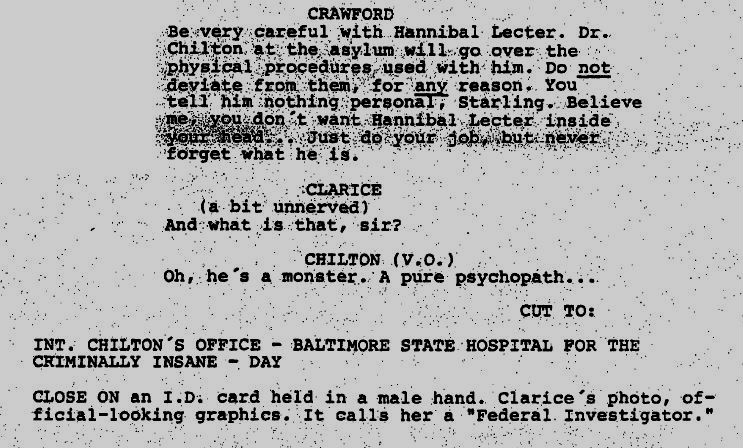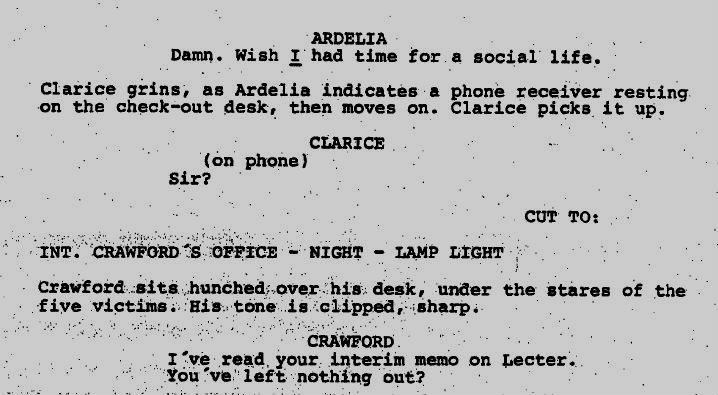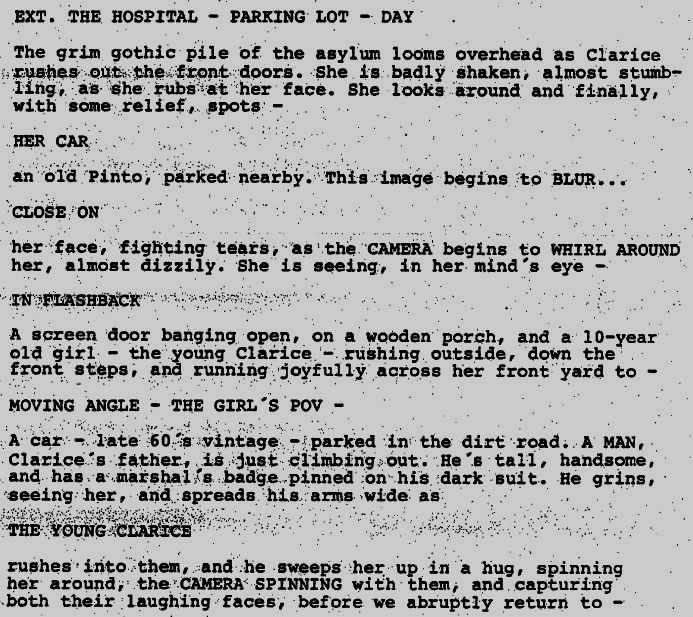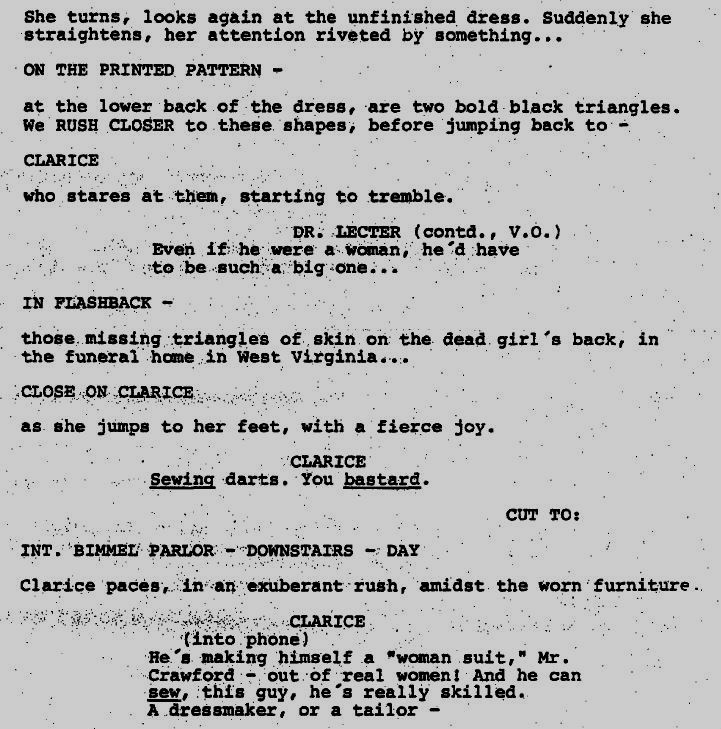The space between: Transitions in The Silence of The Lambs script
I’ve been working on a thriller recently, and the need for pace, suspense, surprise and, well, thrills made me consider the use of transitions in scripts more than ever.
I’ve always known that the space between scenes can tell more than the scenes themselves – a cut to a contradictory scene in a comedy can bring on plenty of audience LOLs, but in thrillers, they add a sense of propulsion and can cut down the dreaded exposition to a minimum.
In terms of the mantra of ‘show, don’t tell’, transitions do the opposite – they don’t show the audience anything – rather they make the audience do the own work in their own minds. As everything in a script, and in a film, is a deliberate choice – the audience instantly ‘gets’ that the writer or director has chosen to show these two scenes or images next to one another – and therefore the space between them must mean something.
To find the best examples of transitions, I read through some of my favourite ever screenplays, and found the best examples in Ted Tally’s Oscar-winning The Silence of The Lambs. I’ve now read this (slightly obsessively) five times in a row – and here are the transitions I think work best…
1. (The very creepy) Dr Chiltern introduces us to Hannibal Lecter

In this transition, we’re transported to the world of Hannibal Lecter with a great use of question and answer transition. Clarice Starling asks the question ‘what is Hannibal Lecter’ and instead of Crawford answering, it is Dr Chiltern in the secure facility in Baltimore.
I think this is my favourite transition, as it deftly gives us exposition, and also transports us to a completely different place. We instantly ‘get’ that Clarice has gone to interview Lecter, without having to sit through a series of boring scenes where Clarice packs her case, books her ticket, has trouble getting to the airport on time etc.
2. Clarice is transported back in time

This is one of several scene sequences in Silence of The Lambs that uses a strong visual image to take us (and Clarice) back to a different time. The transition here works because it gives us the exposition we need to understand Clarice’s history, and also tells us how haunted this character is by her past.
We know everything we need to because of the gap in the scenes. The later transition in the funeral parlour works in the same way, using her approach to the coffin as the key to her past.
3. Another time, another place

The primary function of this transition is to cut out unnecessary detail, and the mundanities we don’t need to see or know about.
I think this is one of the reasons Silence of The Lambs is so successful – there isn’t an inch of ‘fat’ in the script – we only see what we need to see, and because the transitions are so effective, we as the audience are always ‘catching up’ with the film. There’s no spoon-feeding of the plot.
4. On the page – not on the screen

This transition was made even more efficient in the film. In this extract from the script, there’s more mental hoops for Clarice to go through before she realises that Buffalo Bill is making a suit of women’s skin.
In the final edit of the film, she simply sees the dart patterns on the dress in Frederica Bimmel’s wardrobe – then we cut to her on the phone to Crawford. Again, incredibly efficient, and thrilling for the audience.